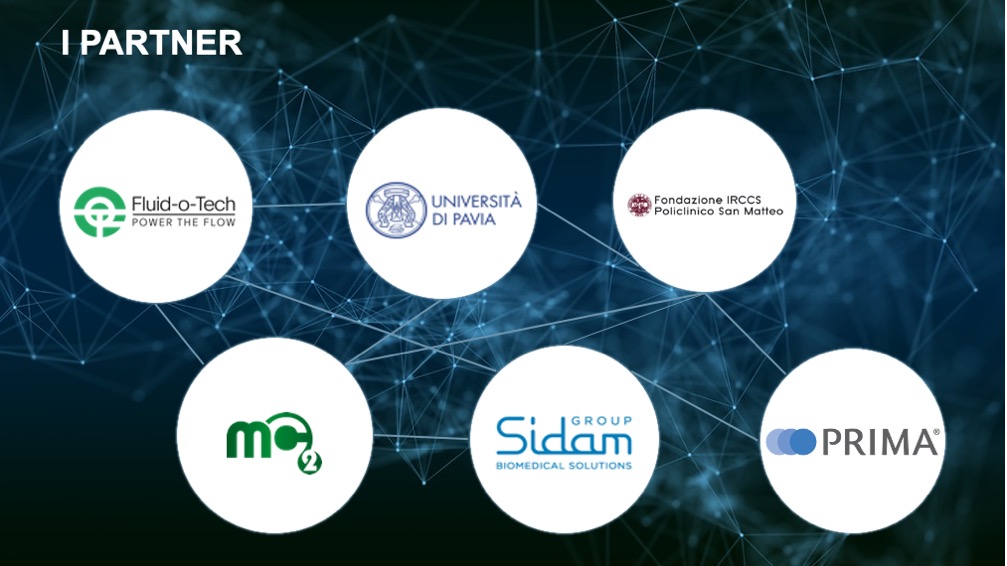DSF: Fluidica Digitale per le Scienze della Vita
Fluidica Digitale per le Scienze della Vita
DSF (Digital Smart Fluidics)
Fluid-o-Tech, Corsico (MI) [Project Coordinator]; SIDAM, San Giuliano Milanese (MI) [Partner]; PRIMA Lab, Milano [Partner]; MC2, Monza-Brianza [Partner]; Dipartimento di Ingegneria Civile e Architettura – UniPV, Pavia [Partner]; Fondazione I.R.C.C.S. Policlinico San Matteo, Pavia [Partner]
€ 2.451.830,57
€ 7.715.695,91
Regione Lombardia
POR FESR 2014-2020:
Call HUB Ricerca e Innovazione
2020 – 2022 (30 months)
The goal of the project is to create a standardized fluidic platform for the development of biomedical devices and equipment for hospital and home infusion, a platform that allows overcoming the technological limits imposed by existing devices. This innovative and more precise fluidic platform will be based on technologies already owned by the partner companies of the Project and will allow the creation of miniaturized fluid components, which are extremely precise and reliable, remotely controllable, totally silent and ready for single use. The remote control will favour the development of devices to support the monitoring and administration of parenteral and enteral therapies, as well as the administration of drugs, favouring the diffusion of hospital and home clinical practices, currently limited by technological factors which the Project intends to overcome. In particular, the project will develop innovative infusion systems for 4 therapeutic areas: 1) in-hospital stay (DEG); 2) home artificial nutrition (NAD); 3) chemotherapy and therapy in the palliation phase (CHEM); 4) intensive care (RIA). The R&D goal of the project is the creation of infusion medical devices, light, remotely controlled and integrated with other devices. The starting point is a range of valves with the following characteristics: small, silent, with embedded electronics for closed-loop control of flow data. Gear pumps characterized by high precision, reliability and repeatability. The devices will be developed by integrating these technologies through the creation of electronics for remote system management, web interfaces for data access collected by devices, connection between mobile devices, in-vitro fluid dynamic models for the benchmarking of devices developed under realistic infusion conditions, integration of devices developed in a pilot department at the hospital facility, definition of the design constraints imposed by regulatory and security aspects, and data management and transmission security.



